Yesterday Mr. P undertook an ambitious culinary project of constructing a Terrine de pieds de porc aux herbes.
“Pied de porc,” is a rather elegant-sounding phrase that translates horrifyingly into “pork feet.” (The French make a distinction between “pied de cochon,” which literally means “pig’s feet” and is the name of a famous Parisian restaurant, and “pied de porc,” which refers to pig’s feet that one plans on eating. I assume English speakers do not feel the usual need to euphemistically mask the identity of the originating animal because pig’s feet is such an uncommon ingredient in our cuisine, although “pig trotter” can be used for those with sophisticated palates.)
A terrine is a pâté that is prepared in a terracotta loaf pan (the terrine). Terrines and pâtés were one French food that I initially approached with suspicion. But then one day in the French Alps, after a hard morning of skiing, we stopped at an auberge for lunch. Two terrines – rabbit and pork – appeared on our table right after we sat down. Famished, I dug into them without my usual nagging fears about meat-based pastes… and when the server came to clear the table in preparation for the plats principaux, I wanted to stop her. Don’t bother with the stew, I’ll stick with the terrines.
So, why pig’s feet? Our meat CSA, which delivers a bounty of Vermont-pastured beef, pork, and lamb to our doorstep every month, offers a menu of “extras” for those who wish to supplement their share with exotic or extravagant fare – everything from liver and hearts ($1.50/pound) to a 12 lb pork loin roast ($9/pound). The availability of organ meat from a trusted source inspired Mr. P to consider homemade pâté. Unfortunately, this month the liver and hearts dropped off the extra list, so Mr. P decided to use fresh pork jowl ($2/pound), pig’s feet ($1/pound), and pork shanks ($5/pound). Pig’s feet reportedly make excellent pâté because of the high gelatin content, which is necessary to hold the terrine together.
What a memorable day that was, to come home and find a package of frozen pig’s feet on the front porch! Naively, I was surprised at how they closely they resembled feet, and they inspired within me a squeamishness unrivaled by anything that I have ever confronted in my own kitchen.
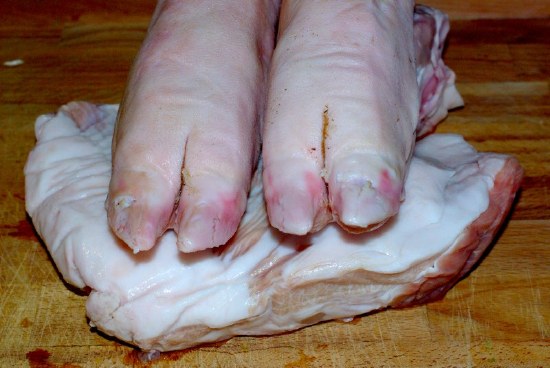
Mr. P did all of the preparation and cooking, improvising off a French recipe (here) by an innkeeper named Françoise. After soaking the feet & meat overnight in a tub of salted water…
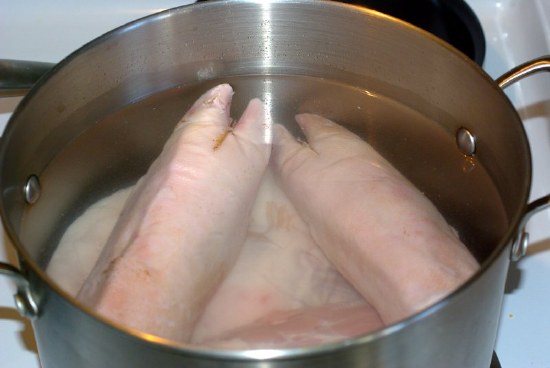
… he boiled it, skimming off whatever that stuff is, while filling the kitchen with a visceral stench.
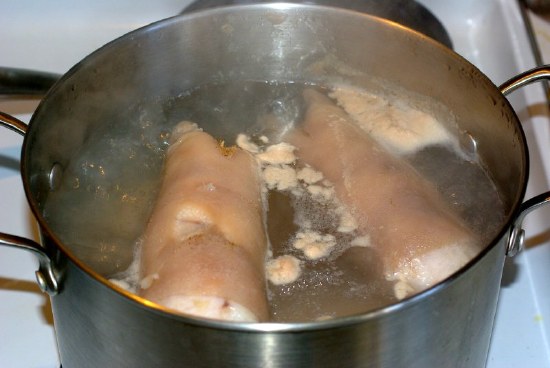
Pâté en terrine isn’t all meat. The French can’t cook anything without liberal use of leeks, celery, carrots, garlic, parsley, tarragon, thyme, and of course wine.
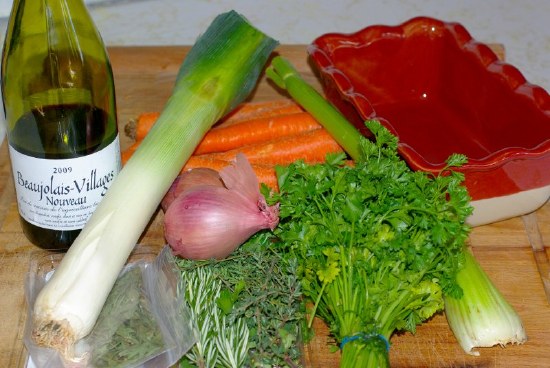
But those are merely the supporting players in this kitchen drama that stars the pig’s feet, which Mr. P skinned and split.
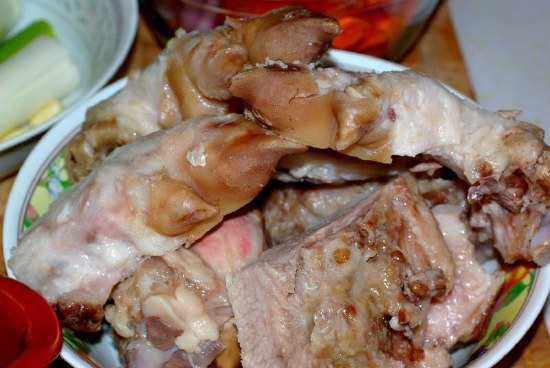
Everything was placed in a stock pot and simmered for two hours.
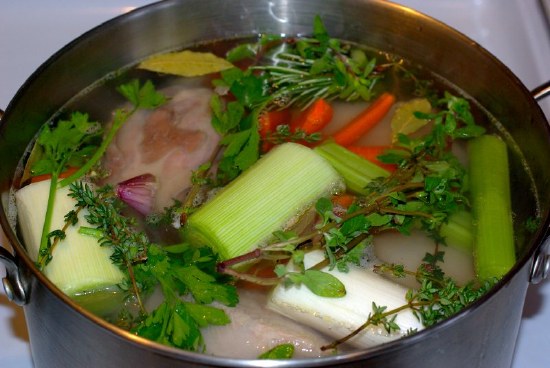
Then the meat was extracted, both from the pot and eventually from the bone.
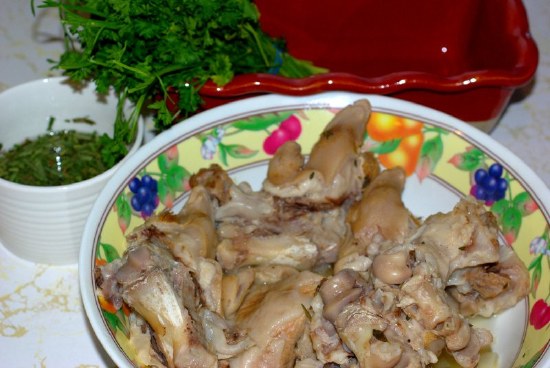
Mr. P strained the broth from the stock pot…

… and then the meat was mixed with the broth and seasonings, and placed in the terrine.
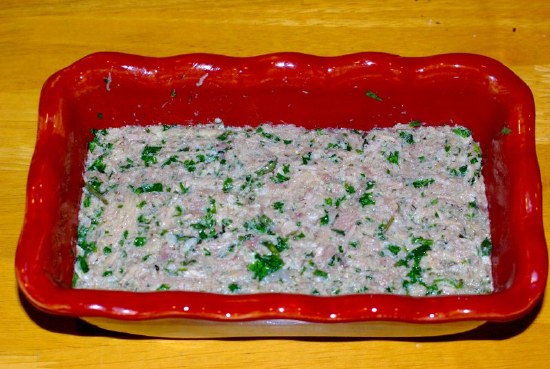
Then, it went into the refrigerator for a day… and tonight, we sampled the meaty fruits of Mr. P’s labor. It was certainly tasty, with the herbs and broth lending flavor to the moist fattiness of the viscous pork. Mr. P said that it turned out more like a rillette than a terrine, but I do not know enough about either food to make a semantic distinction. It’s all just yummy meat paste to me.
